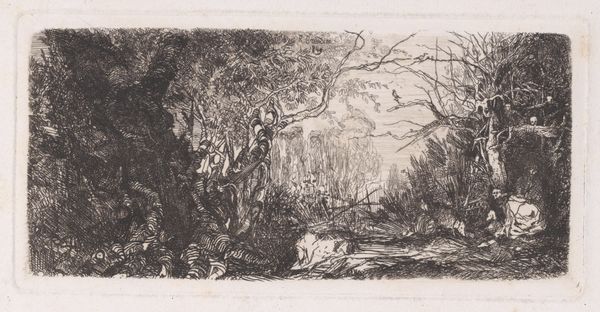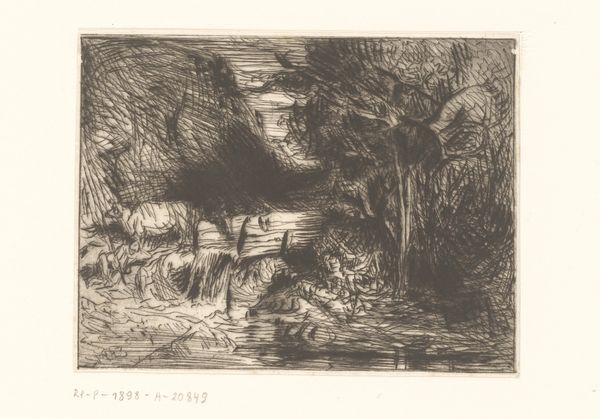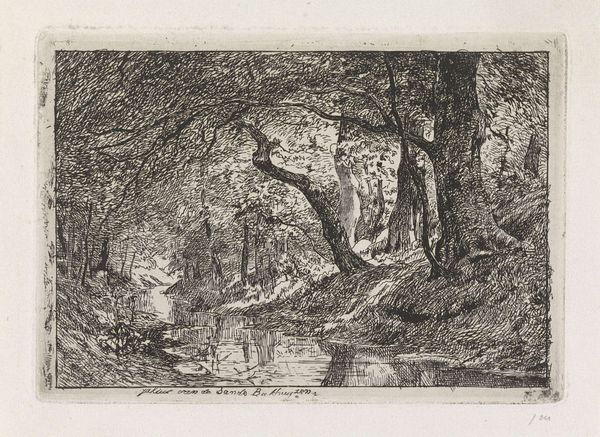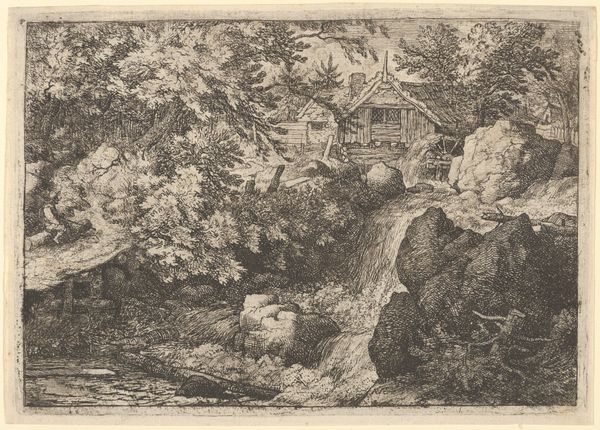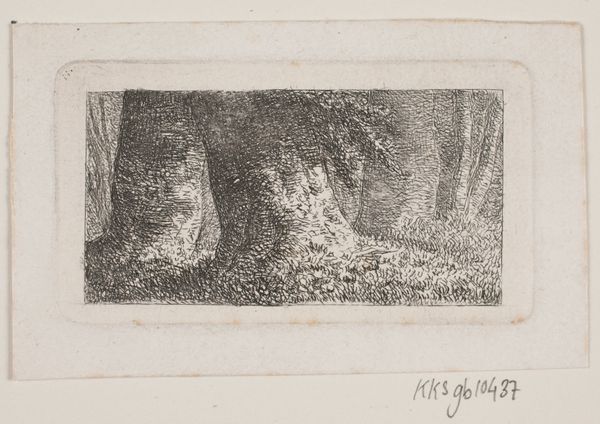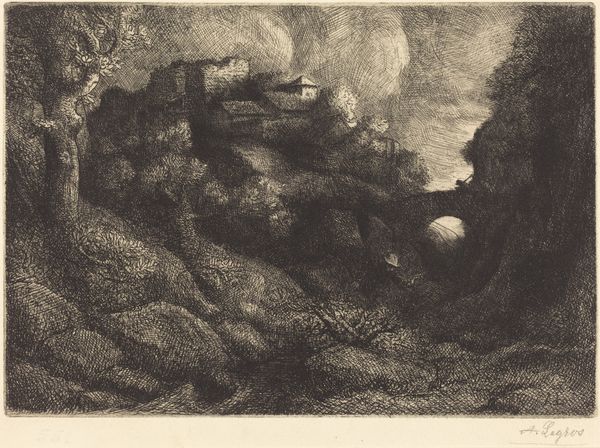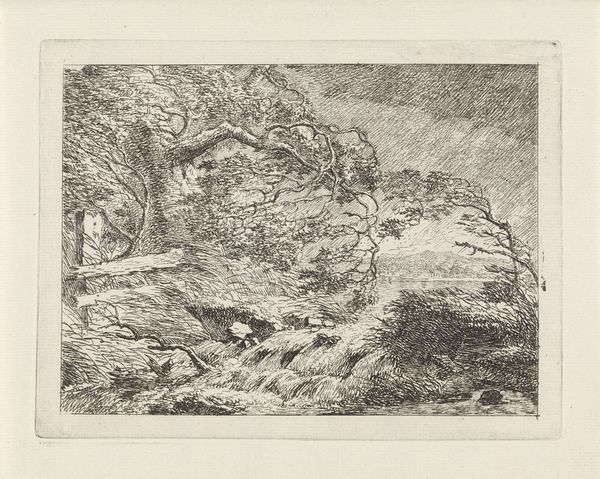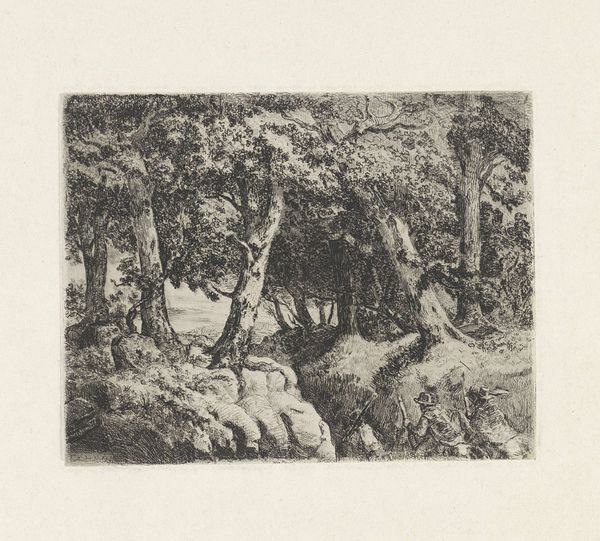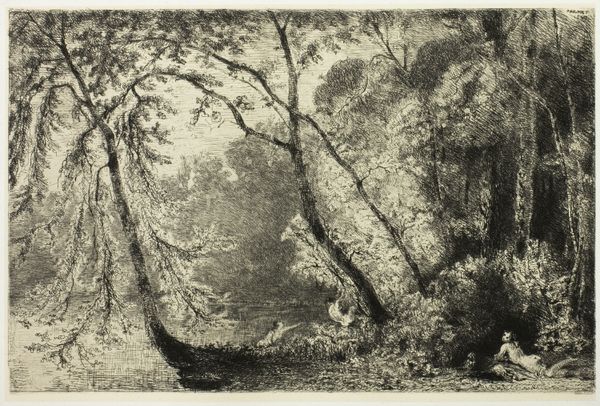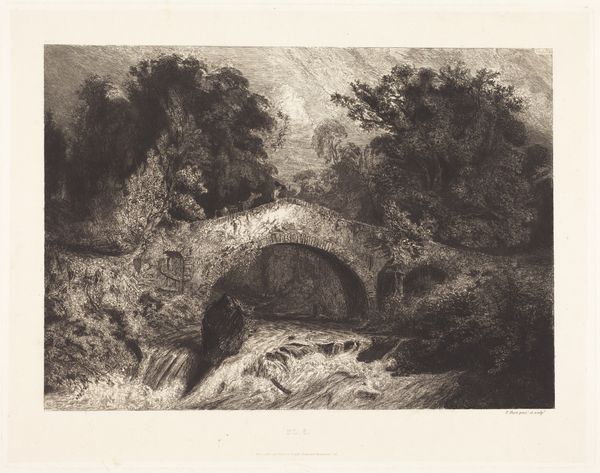
Boslandschap met beek en bomen op oever c. 1845 - 1892
0:00
0:00
etching
#
etching
#
landscape
#
charcoal drawing
#
forest
#
pen-ink sketch
#
realism
Dimensions: height 110 mm, width 158 mm
Copyright: Rijks Museum: Open Domain
Curator: Let's turn our attention to Julius Jacobus van de Sande Bakhuyzen's "Wooded Landscape with Stream and Trees on Bank," an etching created sometime between 1845 and 1892. It's part of the Rijksmuseum's collection. Editor: My initial impression is one of intense quiet. The dense, dark etching conveys a sense of hushed stillness deep within the woods. Curator: Indeed. The artist's skillful use of line—look at the layering of the etched marks—creates both depth and a remarkable texture. Note how the density increases as we move into the wooded interior. Semiotically, this acts to intensify our gaze towards an indefinite, yet evocative destination. Editor: For me, that shadowed interior conjures up age-old folklore; fairy tales and primeval forests. The water, as a symbolic passage between known and unknown, contributes to this reading. It invites, but also warns. I see how the landscape evokes ideas about our psychological interaction with natural forms, almost primordial. Curator: Interesting. I perceive the play of light and shadow as a conscious structural decision, less about symbolism and more about the construction of visual space. The composition leads our eye from the stream in the foreground back into that progressively obscured center, adhering to established landscape pictorial structure. The stream directs your perspective using established formal visual tools. Editor: Yet even this calculated composition cannot entirely negate the emotive power of recurring symbolic themes such as a secluded natural setting. Are these forests the realm of healing or of monstrous transformation? Consider that we encounter nature in times of fear and in times of love. The enduring symbolic valence is as present as Bakhuyzen's beautiful use of line. Curator: A compelling observation. However, to assume these overt psychological dimensions without considering the meticulous artistic approach seems an unbalanced assessment. It also sells short the artistic skill involved here, the labor! It is, after all, an artifact—an arrangement! Editor: Agreed that skill is important, but, ultimately, I am unable to sever the work entirely from its deep cultural reservoir of symbolic content. How much can we truly disassociate form from our own conditioning as humans? I feel that here it’s about a symbolic reading: woods are the locus for dreams. Curator: Perhaps somewhere between structural decisions and dream states, the essence lies! Thank you for your insights. Editor: Likewise, thank you.
Comments
No comments
Be the first to comment and join the conversation on the ultimate creative platform.
